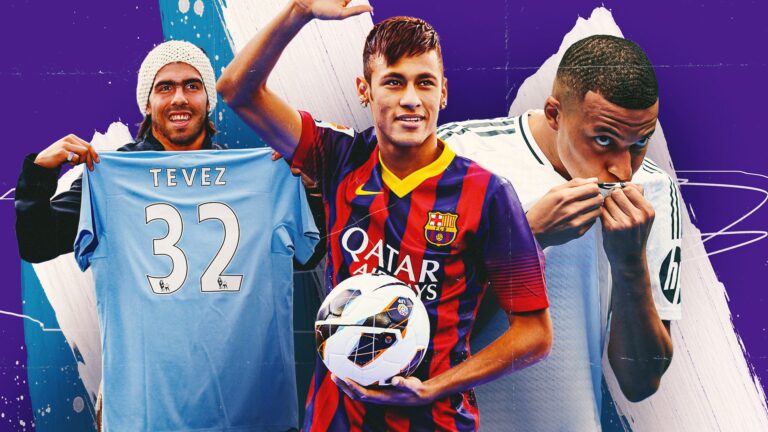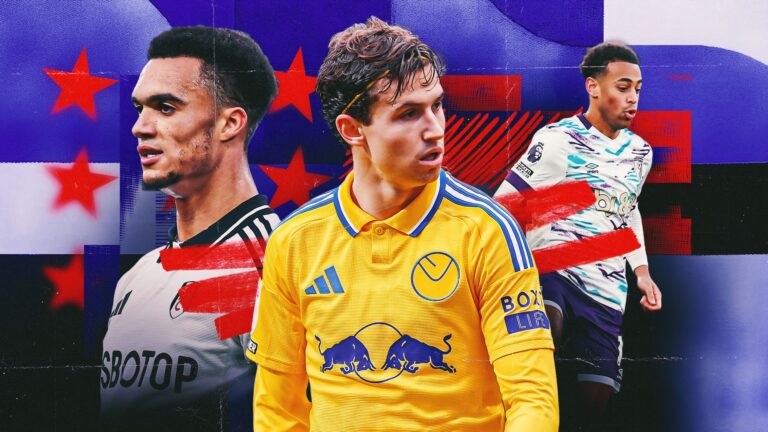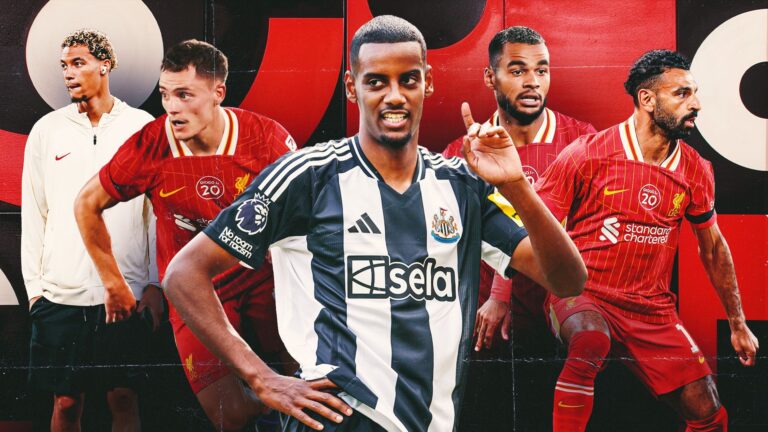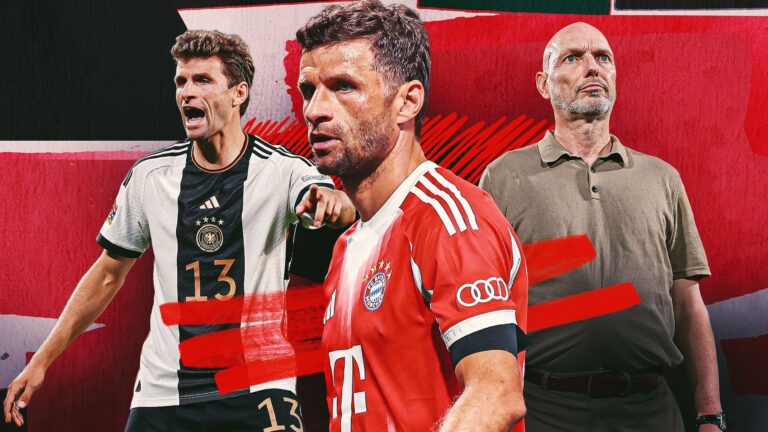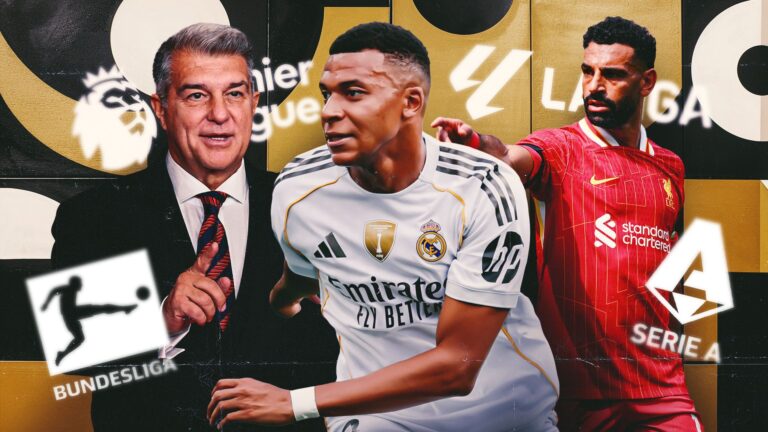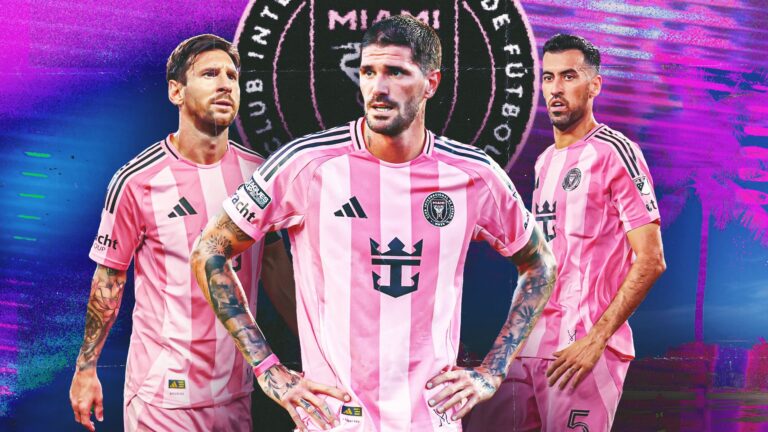Football General Manager
In the end, the Club World Cup was worth fighting over. It was unclear who said what to who at full time of the final on Sunday, but as the Chelsea players celebrated, tempers flared.
PSG’s Gianluigi Donnarumma and Luis Enrique and Chelsea’s Joao Pedro were at the center of it all. There were a couple of slaps, a shove, some words exchanged, and – on the surface – much anti-climactic drama. Pedro ended up on the ground. No one looked particularly happy. It was already 3-0 Chelsea, a long and sweaty Club World Cup in the U.S. finally complete.
But that scrap was perhaps needed, the bit of bite to bring what had otherwise been a reasonably tepid tournament to life.
The 2025 CWC was deadened for long spells. There were some good moments, to be sure, many provided by the fans of teams that had long since been eliminated. But much of this heavily marketed, expanded 32-team tournament felt forced, unproductive, and played out in a series of stadiums across the U.S. that weren’t prepared for, well, a soccer tournament.
Still, competitions need time to gestate, grow, find their own meaning. And even if this beta-testing version of FIFA president Gianni Infantino’s political vanity project – and the potential money behind it – didn’t quite come off, there was plenty of promise to be found, and evidence enough to suggest that it could be successful for many years to come.
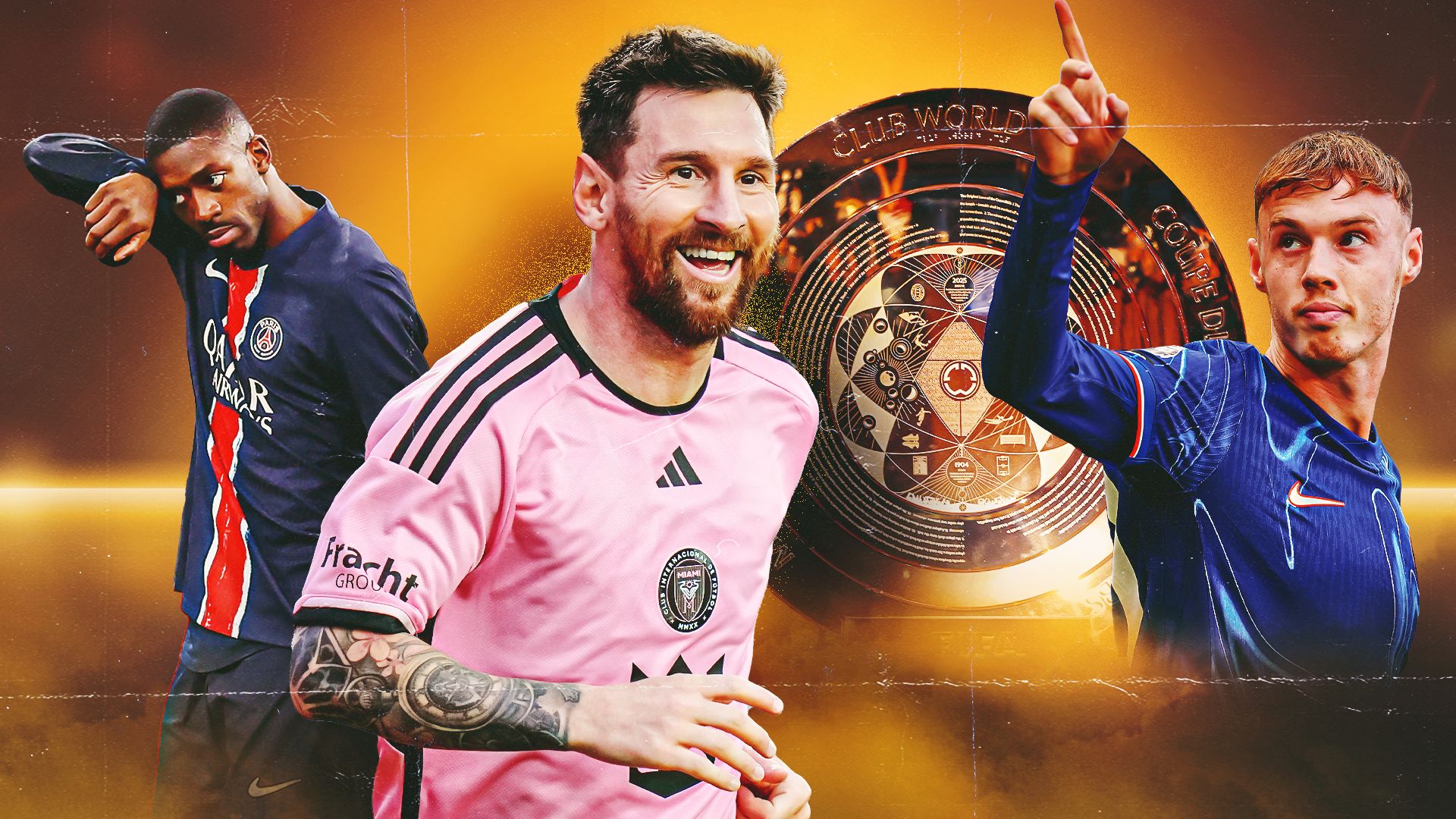








In the end, the Club World Cup was worth fighting over. It was unclear who said what to who at full time of the final on Sunday, but as the Chelsea players celebrated, tempers flared.
PSG’s Gianluigi Donnarumma and Luis Enrique and Chelsea’s Joao Pedro were at the center of it all. There were a couple of slaps, a shove, some words exchanged, and – on the surface – much anti-climactic drama. Pedro ended up on the ground. No one looked particularly happy. It was already 3-0 Chelsea, a long and sweaty Club World Cup in the U.S. finally complete.
But that scrap was perhaps needed, the bit of bite to bring what had otherwise been a reasonably tepid tournament to life.
The 2025 CWC was deadened for long spells. There were some good moments, to be sure, many provided by the fans of teams that had long since been eliminated. But much of this heavily marketed, expanded 32-team tournament felt forced, unproductive, and played out in a series of stadiums across the U.S. that weren’t prepared for, well, a soccer tournament.
Still, competitions need time to gestate, grow, find their own meaning. And even if this beta-testing version of FIFA president Gianni Infantino’s political vanity project – and the potential money behind it – didn’t quite come off, there was plenty of promise to be found, and evidence enough to suggest that it could be successful for many years to come.
Flash back just a year, and this was all very doom and gloom. There were legitimate questions as to whether the Club World Cup could actually be put on. FIFA did not have a broadcast or streaming deal. Host venues weren’t announced. There was no clear reasoning as to how teams qualified. Inter Miami – or, Lionel Messi, if you prefer – weren’t even in it yet. Then-Real Madrid manager Carlo Ancelotti went as far as to suggest that his team might boycott the tournament altogether.
“FIFA forgets that players and teams will not participate in the new Club World Cup. A single Real Madrid match is worth €20 million and FIFA wants to give us that amount for the entire tournament. Negative. Like us, other clubs will refuse the invitation,” he said in June 2024.
In that sense, then, this has been a remarkable accomplishment. That this thing even happened is something of a miracle. No matter how hastily thrown together everything appeared to be, Infantino – for all of his many critics – had been headstrong in the fact that the CWC would happen and it would be a success. There is an element of speaking things into existence, manifesting the success of a seat-of-the-pants tournament, but his rhetoric has consistently been that this reinvented Club World Cup would be massive for the sport.
Whether he is right or wrong remains to be seen. Check your rear-view mirror. But this tournament actually happened, people watched it for free, and there were no apocalyptic developments along the way. True, these are the smallest of victories in the scope of a competition. But they are also the necessities.
The biggest unknown surrounding the CWC was how seriously teams would take the competition. It was a fair shout. Soccer is often viewed from a remarkably European perspective, and the 12 UEFA teams involved were all playing at the end of their – very long – seasons. The calendar is already too packed, and there were widespread fears that the whole thing would basically be treated by clubs as a summer stroll.
Right from the start, though, that proved not to be the case. The trendsetters here were probably eventual runners-up – not, as Luis Enrique emphasized, losers – PSG. They took the momentum from their Champions League win right into their first fixture, hammering Atletico Madrid, 4-0.
Bayern Munich followed suit, putting 10 goals past semi-pro side Auckland City, whose inclusion was one of the more compelling storylines of the tournament. For Auckland, the game, and lopsided scoreline, was by no means an embarrassment.
“It’s a professional tournament, and professional standards need to be upheld,” defender Nathan Lobo said. “And I feel like [the result] is just a sign of respect.”
Everyone else soon followed. Boca Juniors spent 90 minutes kicking Benfica and earned a 2-2 draw. Real Madrid started their best XI and toiled to a tie with eventual giant-killers Al-Hilal. River Plate showed no mercy against Urawa Reds. Even Pep Guardiola and Man City – who seem to spend the first few months of every season deciding to reinvent football before finding a perfect formula to win every game – went full strength against lowly Wydad.
The knockouts, in the end, were full-blooded. PSG battered Inter Miami. Fluminense upset Inter. Al-Hilal and Man City played out one of the more remarkable games of football you might see – the Saudi side winning 4-3 in extra time and forcing Guardiola into admitting that he perhaps underestimated his opponent.
These were good things. Tournaments cannot simply exist and be considered important. Neither fans nor teams can suddenly decide that they mean the world. Jeopardy and watchability come from precedent. And all competitions have to start somewhere.
The European Cup exists because a French newspaper, L’Equipe, decided it should. The World Cup happened because FIFA, as it existed then, wasn’t happy with the way the Olympic Games set up soccer.
“Who knows? Maybe the fifth edition of the FIFA Club World Cup, we’re all going to remember the first one,” Taylor Twellman told BALLGM on the eve of the tournament.
Perhaps part of the appeal here was that FIFA tapped into all of its confederations. Sure, there was a strong European presence, but Africa, Asia and, of course, South America were well represented. CONCACAF, too, provided a fine level of talent.
And that’s what led to some of the jeopardy. These teams never really have the opportunity to play each other outside of the drab preseason friendlies that serve as cash grabs every summer. Now, they could face off in what was ultimately a competitive setting.
Everyone, in some way, was out to prove something. Manager Luis Enrique made it clear early on that PSG wanted to be the best team in the world. South American sides made no secret of their desire to beat European clubs. And elsewhere? They thought they had a chance, too.
“I think we will be the surprise of the tournament,” a spokesperson for Egyptian side Al-Ahly told BALLGM before their opening game with Inter Miami.
It fostered some highly watchable football. Part of the issue with modern soccer is that it is remarkably formulaic. European teams know, loosely, how European teams tend to play. South American sides are familiar with styles from within their own continent. The Champions League, Copa Libertadores and similar confederation-wide competitions ruin some of the fun. You basically know what you’re going to get.
That’s where the Club World Cup won, at least on the pitch. Mamelodi Sundowns vs. Borussia Dortmund on June 21 was perhaps the perfect encapsulation of it all. Dortmund were mightily unprepared for Mamelodi’s pace and directness. The South African side scored three wonderful goals, and deserved more than a frantic 4-3 loss.
“This was a hell of an experience for the players. We grew a lot from this match. We can compete. We showed that we are on the pitch and we are not afraid. We were brave enough and took them to the limit. Today we got a lot of respect from the world. I already heard that Dortmund will remember this match for a long time and that is absolutely beautiful for me,” Sundowns coach Miguel Cardoso said after the match.
The same can be said of Bayern-Boca, PSG-Botafogo and Miami-Porto. All three served up wonderful entertainment – no doubt aided by the unfamiliarity between the two teams.
And then, there was the less favorable stuff.
Dynamic ticket pricing is dangerous. It is, in effect, a massive moneymaking scheme. The idea is capitalism in real time, that prices change alongside demand – minute to minute. And FIFA’s biggest error in this tournament was the ticketing policy. Prices for the group stages were set far too high, and there were empty seats at the opening match between Al Ahly and Miami.
Fans were routinely put off by prices as a result. FIFA insisted that things were just fine – nothing to see here – announcing that 1.5 million tickets had been sold a few days into the tournament and describing it as a “unique and multicultural atmosphere.” But the eye test, and raw data, suggested otherwise.
Empty seats were common throughout the group stage and into the knockouts. LAFC and Chelsea played in a mid-afternoon kickoff in Atlanta, with just 22,000 fans attending. Mamelodi Sundowns-Ulsan, held at Inter u0026amp; Co. Stadium in Orlando, drew just 3,412 fans.
Not a single round of 16 game sold out, with Real Madrid-Juventus coming closest with 95% of seats filled. Fluminense and Inter Milan played a knockout game in front of 20,030 spectators – not a bad figure until you factor in that it was played at the spacious Bank of America Stadium, which was just 27% full.
As the tournament wore on, FIFA started experimenting with price drops – slashing tickets ahead of big games. You could buy a ticket to a quarterfinal game for as low as $11 – an enormous decrease from the $500 price point in early January when the tickets were first made available.
One Chelsea fan told BALLGM that he had spent $200 for a group stage game against Flamengo in Philadelphia, assuming that the stadium would sell out. He later spent an “amazing” $106 for a semifinal spot as his side took on Fluminense. Another, on the way to the final, described the $240 he paid for a seat on the second level of MetLife as “not bad.”
Their stories are not uncommon. As prices tumbled, more seats started to fill up. It all culminated in the final Sunday at MetLife, matching Chelsea and PSG. FIFA cut prices for the last game of the tournament just a few days before, the cheapest seat going from $312 to $250. New Jersey Governor Phil Murphy promised around the same time that the final would sell out. By the end of it all, 81,000 fans had attended, leaving no empty seats around the concrete bowl on the eastern edge of New Jersey.
The general attendance issues are by no means an indictment of those who did show up. It was, in fact, those in the stands that gave the tournament much-needed life. The football world tends to have an idealized view of South American football – La Bombanera, asado, churrasco, samba football, and passionate fans.
The reality can be a bit mixed. Not every game is a Superclasico or a top flight Brazilian Serie A clash at the Maracana. But the South American fans delivered in style at this tournament. There was no doubt that the teams themselves were eager to beat their European counterparts. Coaches made no secret of it. Players were open in their admission. CONMEBOL has long been a place for very good football that the rest of the world has ignored – treated only as a talent factory.
The fans, though, were out to prove their passion. Palmeiras supporters took over Times Square in New York City, filled subway cars and sang for 90 minutes plus. Tens of thousands of River Plate supporters rallied on Venice Beach. The former manager of Boca Juniors was serenaded by thousands in the Atlantic Ocean as he took a dip at a gathering for the Buenos Aires club in Miami.
“Sometimes we just want to have attention and show the rest of the world our game. So I think that since in the beginning, when the teams were undefeated, and had started well, bringing the party and the atmosphere to the games, there was this kind of like, ‘Oh, OK, we’re doing well in South America,’” Fluminense fan Ricardo Esteves told BALLGM.
It is a shame, then, that so many of them traveled to stadiums that weren’t designed – or in some cases, even properly adapted – for soccer. This has long been a problem for the United States: most of the venues are cathedrals for NFL or college football teams. Soccer pitches are, in effect, converted football fields. A number of surfaces, including that at MetLife, featured grass grown elsewhere that was then laid down over artificial turf.
And that certainly took its toll. Players and coaches routinely complained about the state of the pitches over the course of the tournament. Real Madrid’s Jude Bellingham remarked that the ball bounced unpredictably and that players could feel where the grass was uneven. There were issues with fields that were first far too dry, and then remarkably wet.
Reece James, Chelsea’s captain, remarked after the final that he thought the pitches were, in effect, unsafe.
“It’s not the best for the body, for the joints and for the muscles,” he said. “You will see higher quality games and higher quality football if we played on the surface we play on in Europe.”
There were further issues. It turns out, to the surprise of absolutely nobody, that United States summers are hot. Temperatures routinely soared over 90 degrees for games throughout the tournament, especially midday kickoffs. European sides, in particular, voiced their frustrations. Atletico Madrid midfielder Marcos Llorente said he had sore feet due to the temperature.
Luis Enrique admitted that the weather had an impact on his side’s lopsided win over Atleti in the group stage, saying, “The match was clearly influenced by the temperature. The time slot is great for European audiences, but the teams are suffering. In terms of play, it’s impossible to perform at a very high level for 90 minutes.”
Chelsea’s Enzo Fernandez outlined his displeasure with the conditions, too, remarking that he felt dizzy during the semifinal after trying to run in intense heat at MetLife.The weather led to significant delays over the course of the tournament. Cooling breaks were standard, but some games were pushed back due to either summer storms or searing heat.
Chelsea-Benfica was interrupted for two hours. Piece it all together and six games were delayed for a combined 8 hours and 29 minutes. FIFPRO later complained that three games “should have been suspended or even postponed because conditions went beyond their threshold.”
The heat impacted the final, as well. Maresca admitted that he asked his team to press high early, knowing that they would likely be too tired to put in a shift later in the game. They won it 3-0, with Maresca later saying that the first 10 minutes, in effect, set up the victory.
Still, there remains a fundamental fact that this was a watchable competition that people cared about. TNT Sports, which sub-licensed a number of matches from global streamer DAZN, averaged 418,000 viewers per game in the U.S. – slightly higher than that of an average Premier League fixture. Six games drew viewing figures north of 500,000. Nearly 1 million watched Madrid-Dortmund in the quarterfinals.
Barring the unforeseen, this tournament will go ahead in 2029. There have been reports that FIFA might open a formal bidding process, not dissimilar to the way it treats a traditional World Cup. There is also talk that the governing body would like to run it back in the U.S.
Many prominent figures have remarked on the success.
“I feel a Club World Cup is needed,” former Arsenal manager Arsene Wenger said. “If you make inquiries to all the clubs who were here then 100 percent of answers would be that they would want to do it again. That’s the best answer of what the clubs think of a Club World Cup.”
MLS commissioner Don Garber, whose teams – Miami, LAFC and Seattle Sounders – managed a combined one win, three draws, six losses in 10 CWC matches, also sang its praises.
“I think the Club World Cup has been an incredible success and a proud moment for everyone involved in soccer across North America. Gianni Infantino had a bold vision, and FIFA delivered a remarkable event. This was a defining moment for the sport,” he said.
Still, there were dissenting voices. Former Liverpool boss Jurgen Klopp called it “the worst idea ever implemented in football.” ESPN FC analyst Shaka Hislop said he “wasn’t falling out of his chair.”
Yet Infantino seemed pleased with his little project, claiming that the revenue from the tournament was north of $2.1 billion – roughly, $33M per match – and saying, “There is no other club competition in the world today that comes anywhere close. It is already the most successful club competition on all different measures.”
Ultimately, it was perhaps best summed up by Maresca, who, after coaching his side to that unexpected victory Sunday against PSG, said that the competition has a bright future.
“I told my players that this competition would be just as important or become more important than the Champions League,” he told reporters.
And perhaps that’s the point. This is very much a work in progress. But for the winners, it felt important. And for the organizers, this whole month was proof that a Club World Cup, in an expanded format, can become a consistent part of the soccer landscape. And that’s likely to be the reality, like it or not.



